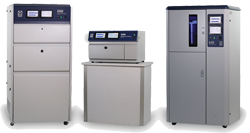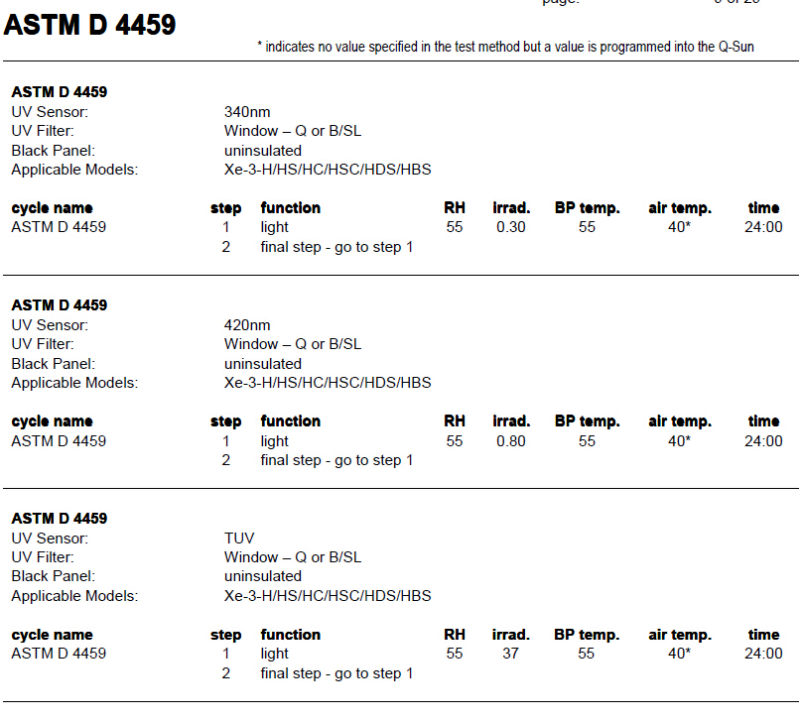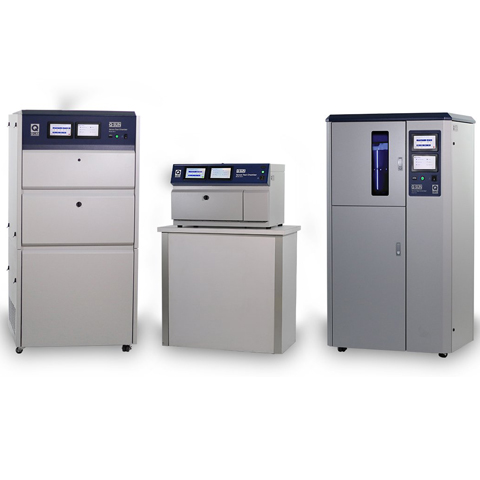【Q-LAB】
氙灯老化试验箱_盐雾试验箱_紫外光老化试验箱
咨询热线
18566398802ASTM D4459 室内用塑料氙灯曝露测试的标准测试方法
ASTM D4459简介
ASTM D4459是室内用塑料氙灯曝露测试的标准测试方法:
ASTM D4459规定了依照测试方法G151和G155,用配备窗玻璃滤光器的氙灯设备对塑料进行暴露测试的具体程序和测试条件,以评估室内用塑料的稳定性。ASTM D4459目前还没有对应的ISO 测试标准。
Q-SUN氙灯试验箱符合ASTM D4459,欢迎 点击图片查看产品
Q-sun氙灯试验箱 ASTM D4459测试方法

附ASTM D4459英文版本(摘抄)
4.1 This practice is intended to simulate the effects produced by exposure to solar radiation through glass. This practice uses exposure in a xenon-arc device equipped with window glass filters and operated in accordance with Practices G151 and G155.
Note 2—Practice D4674 describes exposures in a device that uses a combination of fluorescent “cool white” and ultraviolet (UV) lamps to simulate the effects of exposures to indoor fluorescent light and window glass filtered daylight.
4.2 Warning—Variation in results may be expected when operating conditions are varied within the accepted limits of this practice. Therefore, all references to the use of this practice must be accompanied by a report prepared in accordance with Section 9 that describes the specific operating conditions used. Refer to Practice G151 for detailed information on the caveats applicable to use of results obtained in accordance with this practice.
Note 3—Additional information on sources of variability and on strategies for addressing variability in the design, execution and data analysis of laboratory accelerated exposure tests is found in Guide G141.
4.3 Test results will depend upon the care that is taken to operate the equipment in accordance with Practice G155. Significant factors include regulation of line voltage, temperature and humidity control, and condition and age of the lamps and filters.
4.4 Reproducibility of test results between laboratories has been shown to be good when the stability of materials is evaluated in terms of performance ranking compared to other materials or to a control.4,5 Therefore, exposure of a similar material of known performance (a control) at the same time as the test materials is strongly recommended. It is recommended that at least three replicates of each material be exposed to allow for statistical evaluation of results.
1. Scope
1.1 This practice covers specific procedures and test conditions that are applicable for exposure of plastics in window glass-filtered xenon-arc devices in accordance with Practices G151 and G155 for evaluating the stability of plastics intended for use in indoor applications.
1.2 This standard does not purport to address all of the safety concerns, if any, associated with its use. It is the responsibility of the user of this standard to establish appropriate safety and health practices and determine the applicability of regulatory limitations prior to use.
Note 1—There is no known ISO equivalent to this practice.
Referenced ASTM Standards(相关标准)
D1729 Practice for Visual Appraisal of Colors and Color Differences of Diffusely-Illuminated Opaque Materials
D2244 Practice for Calculation of Color Tolerances and Color Differences from Instrumentally Measured Color Coordinates
D3980 Practice for Interlaboratory Testing of Paint and Related Materials
D4674 Practice for Accelerated Testing for Color Stability of Plastics Exposed to Indoor Office Environments
D5870 Practice for Calculating Property Retention Index of Plastics
E691 Practice for Conducting an Interlaboratory Study to Determine the Precision of a Test Method
G113 Terminology Relating to Natural and Artificial Weathering Tests of Nonmetallic Materials
G141 Guide for Addressing Variability in Exposure Testing of Nonmetallic Materials
G147 Practice for Conditioning and Handling of Nonmetallic Materials for Natural and Artificial Weathering Tests
G151 Practice for Exposing Nonmetallic Materials in Accelerated Test Devices that Use Laboratory Light Sources
G155 Practice for Operating Xenon Arc Light Apparatus for Exposure of Non-Metallic Materials
G169 Guide for Application of Basic Statistical Methods to Weathering Tests
ASTM D4459-06标准
1. Scope
1.1 This practice covers specific procedures and test conditions that are applicable for exposure of plastics in window glass-filtered xenon-arc devices in accordance with Practices G 151 and G 155 for evaluating the stability of plastics intended for use in indoor applications.
This standard does not purport to address all of the safety concerns, if any, associated with its use. It is the responsibility of the user of this standard to establish appropriate safety and health practices and determine the applicability of regulatory limitations prior to use.
Note 1 - There is no known ISO equivalent to this practice.
ASTM D4459-99标准
1. Scope
1.1 This practice covers the procedure applicable when Practice G26, Method C, is employed for exposing plastics to a Xenon lamp, in attempting to predict long-term color-fastness of plastics for use in indoor areas. Such exposure may involve illumination from fluorescent, incandescent, or window-filtered sunlight sources, and thermal radiation.
1.2 This standard does not purport to address all of the safety problems, if any, associated with its use. It is the responsibility of the user of this standard to establish appropriate safety and health practices and determine the applicability of regulatory limitations prior to use.
Note 1-There is no similar or equivalent ISO standard.
